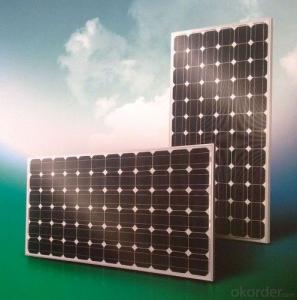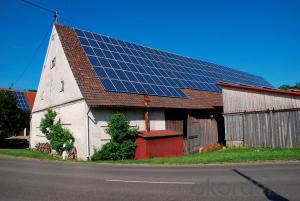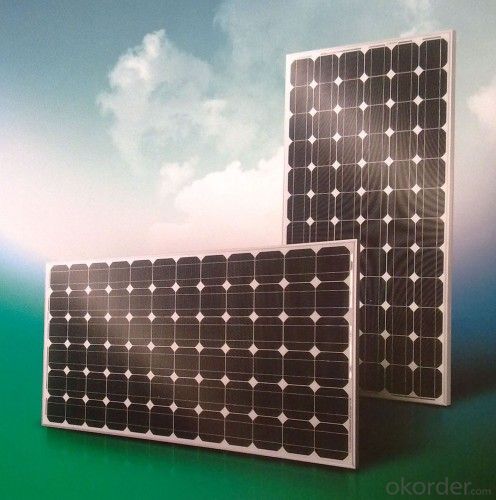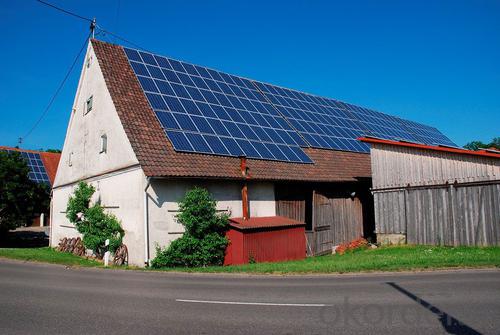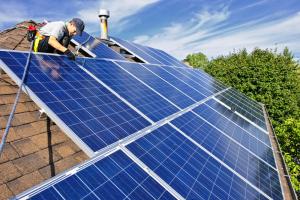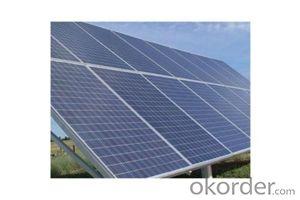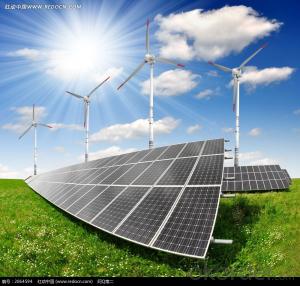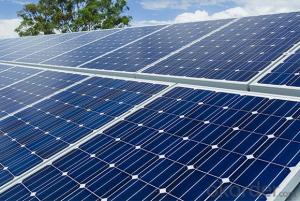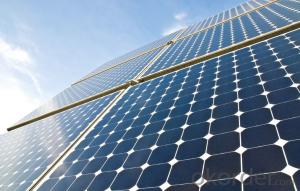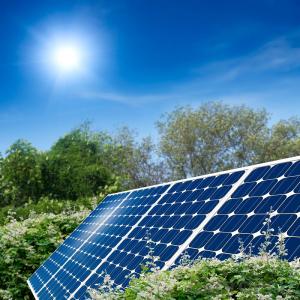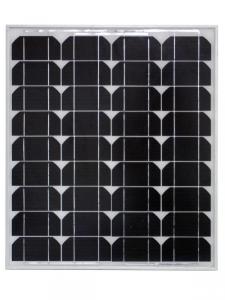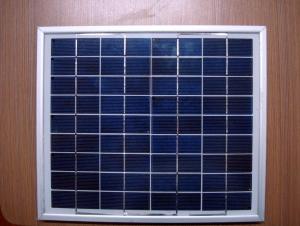2KW CNBM 265W Mono Crystalline Solar PV Modules
- Loading Port:
- China main port
- Payment Terms:
- TT OR LC
- Min Order Qty:
- 100000 watt
- Supply Capability:
- 10000000 watt/month
OKorder Service Pledge
OKorder Financial Service
You Might Also Like
Specification
About us
CNBM International Corp, established in 2004, is the business entity for trade and logistic of CNBM Group.With the advantages in Cement, Composite Materials, New Building Materials and Engineering, CNBM mainly concentrate on coal, steel and construction equipments and give priority to solar and wind energy development.CNBM International is highly recognized by its business partners and clients all over the world and has established good business relationship with the customers in over 120 countries and regions all over the world.
Mono crystalline PV modules 265W
SIZE:1640*992*40mm
Weight:19.5KG
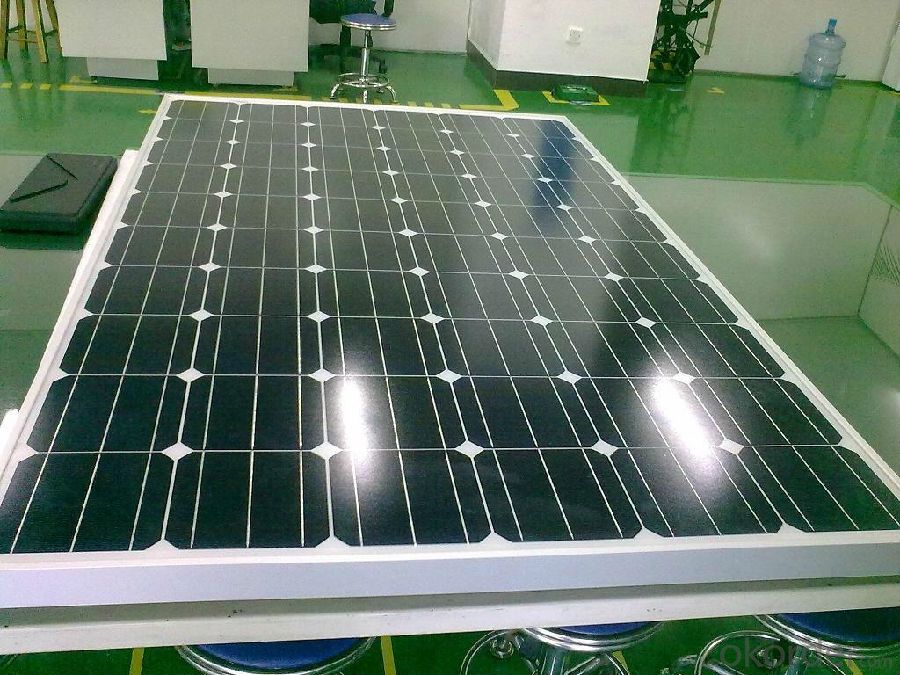
Warranty
provides a 1~3 year limited warranty (“Warranty”) against defects in materials and workmanship for its Uninterruptible power supply, Power inverter/chargers, Solar charge controllers, Battery Products (“Product”).
The term of this Warranty begins on the Product(s) initial purchase date, or the date of receipt of the Product(s) by the end user, whichever is later. This must be indicated on the invoice, bill of sale, and/or warranty registration card submitted to MUST-Solar. This Warranty applies to the original MUST-Solar Product purchaser, and is transferable only if the Product remains installed in the original use location.
FAQ
1. How do I decide which system is right for me ?
For protection from long outages, include a generator or solar panels in your Must solar system. Shorter outages can be handled by a battery-only system.
2. Where my system will be installed ?
Must solar systems are usually wall-mounted near a home's main electrical (circuit breaker) panel.
3. How do I install my system ?
A must solar backup inverter is connected to a home electric system , we will supply detailed installation manual and videos for our customers .
- Q: Can solar panels be used in space?
- Yes, solar panels can be used in space. In fact, they are commonly used to power satellites and spacecraft as they can efficiently convert sunlight into electricity even in the absence of an atmosphere.
- Q: where to find used solar panels?
- That's not a good idea. Solar panels wear out, and you probably won't know how worn out they are until you buy them and install them. Which is a little bit too late for most refunds. Your best bet if you're dead set on being foolish, is probably some place like craigslist.
- Q: Thanks
- Solar energy is a renewable energy resource and there are no fuel costs. No harmful polluting gases are produced. Disadvantages Solar cells are expensive and inefficient, so the cost of their electricity is high. Solar panels may only produce very hot water in very sunny climates, and in cooler areas may need to be supplemented with a conventional boiler. Although warm water can be produced even on cloudy days, neither solar cells nor solar panels work at night.
- Q: We've been considering solar panels for a while now, and we'd like to know a little more about them. Please answer to the best of your knowledge. Thanks.
- I have had my system for almost a year and love it. I got a 3.74 kwh/dc system, my highest electric bill was $35 in the dead of winter and last month was $6.. I paid $6K for the system and was told I would break even in my 6th year, that was factoring in a 5% annual rate increase. In my area the last few rate increased have been well over 5% and they are talking up to 2% next year. Just keep in mind the amount of energy you use will determine how large of a system will work best for you. My system is tied to the grid, so I don't need a storage system. My utility has net metering, so I sell them my excess during the day and buy back what I need at night.
- Q: I've been thinking and I'd like to have solar panels installed on my roof at some point to help reduce our electricity consumption- but I live in IL and in the winter it frequently snows. Is there such a thing as heated solar panels so they don't get coated w/ice or snow? Are solar panels even a feasible option in IL? Thank you, Anna
- With state incentives that rank behind only a few states (such as the ones typically associated with solar like Florida and California) somebody definitely thinks solar is right for Illinois. (source is first site below) As for the ice and snow the typical strategy is to have a tilt that allows for only limited accumulation and still has good orientation to the sun. This is frequently talked about in articles in the magazines Homepower and Solar today. Homepower has a site online and some items are free (2nd site) Good Luck
- Q: Do solar panels require batteries?
- No, solar panels do not require batteries. They generate electricity directly from sunlight and can be connected to the electrical grid to supply power or utilize net metering to offset energy consumption. However, batteries can be used to store excess energy for later use when solar generation is low or during power outages.
- Q: I'm doing a science fair experiment with a tiny two-inch solar panel that only gives off like .5 volts of energy, but I need to know how many volts an average sized solar panel (like one you'd get to run your house) would produce. And how many panels do people usually get?
- You should read up on the different electrical units. You say .5 volts of energy, but this makes little sense. Energy is measured in Joules. Power in Watts. Solar panels will produce different voltages and currents, depending on the amount and angle of sunlight hitting them. Power = volts * amps. Before installing solar panels a home owner should do an energy audit to find out how much power they currently use - and how much that could be reduced with some easy changes. Solar panels are expensive, so it makes sense to reduce the amount that you need to install. In some places you can sell extra power back to your utility - so having extra panels might give you some small amount of money back - but this is rarely enough to justify the cost of the extra panels. I put 28 panels on my house (see picture in source URL). My utility has tiered pricing for electricity (first few kWh each month are cheap, but price for extra ones goes up in stages). My panels keep me from having to pay the higher rates.
- Q: how long till a 50 watt solar panel pays itself off in buffalo, ny if its $500. i have national grid and heres the link to the rates. i am residential.
- the Department of Energy has a ' solar hours calculator for locations around the US factoring in hours of sunlight.....the other factor is how perpendicular to the sun the panel is.....as a wild guess I'd say Buffalo's solar hours factor is about 3....which means as an average over 365 days you get 3 hours a day of maximum ( 50 watts ) output. So 3 x 50 x 365 = 64.25 kWh a year. At, say, 5 cents a kWh, you're making $24.63 a year worth of electricity. See why the houses of upstate New York..let alone Ohio or Virginia or Georgia.....aren''t covered in panels?
- Q: I'm writing a lab and I have to put information about solar panels in it. The history, who started them, why they are useful etc. any good sites that can help me?
- Yup, just Google solar panel history and away you go.
- Q: how does solar panels work?
- Solar panels collect solar radiation from the sun and actively convert that energy to electricity. Solar panels are comprised of several individual solar cells. These solar cells function similarly to large semiconductors and utilize a large-area p-n junction diode. When the solar cells are exposed to sunlight, the p-n junction diodes convert the energy from sunlight into usable electrical energy. The energy generated from photons striking the surface of the solar panel allows electrons to be knocked out of their orbits and released, and electric fields in the solar cells pull these free electrons in a directional current, from which metal contacts in the solar cell can generate electricity. The more solar cells in a solar panel and the higher the quality of the solar cells, the more total electrical output the solar panel can produce. The conversion of sunlight to usable electrical energy has been dubbed the Photovoltaic Effect. The photovoltaic effect arises from the properties of the p-n junction diode, as such there are no moving parts in a solar panel.
Send your message to us
2KW CNBM 265W Mono Crystalline Solar PV Modules
- Loading Port:
- China main port
- Payment Terms:
- TT OR LC
- Min Order Qty:
- 100000 watt
- Supply Capability:
- 10000000 watt/month
OKorder Service Pledge
OKorder Financial Service
Similar products
Hot products
Hot Searches
Related keywords
